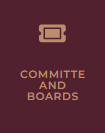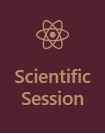Management of Separated Endodontic Instrument in Mandibular Second Molar with Bypass Technique
DOI:
https://doi.org/10.18196/imunity.v1i1.1Keywords:
bypass, separated endodontic instrument, cold lateral condensation, endodontic treatmentAbstract
One of the most common mishaps in root canal treatment is a separated endodontic instrument. Bypass technique is an effective alternative besides file retrieval while clinical conditions have lack of access and visibility. Other than, this technique gives a more conservative outcome because it prevents more dentin removal. The aim of this case report was to describe management of separated endodontic instruments in the mandibular second molar with bypass technique during endodontic treatment. A 3,5 mm F1 ProTaper Hand Use file was separated in the mesiobuccal canal of the mandibular second molar. Radiograph examination was taken to make sure the level of fragment. Bypass was performed with #10 until #25 K-File to pass the separated instrument through the gap between it and the root canal wall. Obturation has been done with gutta percha and resin-based sealer using cold lateral condensation technique. Direct restoration was chosen as final restoration after 6 days follow up. Bypass technique can be performed as management of separated instrument considering the risks involved fragment extrusion to apical region, secondary separated instrument, and conservative aspect.
References
Pontoriero DIK, Grandini S, Spagnuolo G, Discepoli N, Benedicenti S, Maccagnola V, et al. Clinical Outcomes of Endodontic Treatments and Restorations with and without Posts Up to 18 Years. J Clin Med. 2021 Feb 25;10(5):908.
Pietrzycka K, Radwanski M, Hardan L, Bourgi R, Mancino D, Haikel Y, et al. The Assessment of Quality of the Root Canal Filling and the Number of Visits Needed for Completing Primary Root Canal Treatment by Operators with Different Experience. Bioengineering. 2022 Sep;9(9):468.
Alsinaidi YA, Almotairi TAT, Alyami IM, Alsharif AA, Alshammari MZ, A AAS, et al. Factors Affecting Root Canal Treatment Outcomes: A Systematic Review. Saudi J Oral Dent Res. 2022 Nov 2;7(11):270–5.
Louis H. Berman KMH. Cohen’s Pathway of The Pulp. 11th ed. St Louis : Missouri: Elsevier; 2016.
Shaik I, Qadri F, Deshmukh R, Clement C, Patel A, Khan M. Comparing techniques for removal of separated endodontic instruments: Systematic review and meta-analysis. ijhs. 2022 June 6;13792–805.
Yahia S, Mabrouk R, Oueslati A, Frih N. Conservative Approach for Management of Separated Endodontic Instruments: Case Reports. EAS Journal of Dentistry and Oral Medicine. 2022 Feb 28;4:36–40.
Terauchi Y, Ali WT, Abielhassan MM. Present status and future directions: Removal of fractured instruments. International Endodontic Journal. 2022;55(S3):685–709.
Susilo M, Irmaleny I. Penatalaksanaan instrumen jarum patah di gigi molar kedua kanan bawah. Majalah Kedokteran Gigi Klinik. 2022 Aug 25;7:15.
Fouad B, Kikly A, Belghith A, Glii W, Hodroj L, Nabiha D. Broken file: bypass or ultrasonic removal technique Ology. 2023 July 7;
Dako T, Bica CI, Lazar L, Lazar AP, Monea M. Separated Instrument Management as a Procedural Accident in Endodontics Using the EDTA (C10H16N2O8) Aided Bypassing Technique and the Ultrasonic Removal Method. An in vitro Study. Rev Chim. 2020 Dec 4;71(11):73–9.
Rao L, Thirunarayanan S, Shetty A. Impact of a Retained Instrument on Treatment Outcome: A Systematic Review. Journal of Health and Allied Sciences NU. 2022 Aug 8;13.
Terauchi Y, Sexton C, Bakland LK, Bogen G. Factors Affecting the Removal Time of Separated Instruments. Journal of Endodontics. 2021 Aug 1;47(8):1245–52.
Javanmardi S, Singh G, Al-Nahlawi T. Periapical Healing Following Bypass of a Separated Instrument in a Mandibular Molar - A Case Report. Act Scie Dental. 2021 Aug 31;5(9):169–74.







